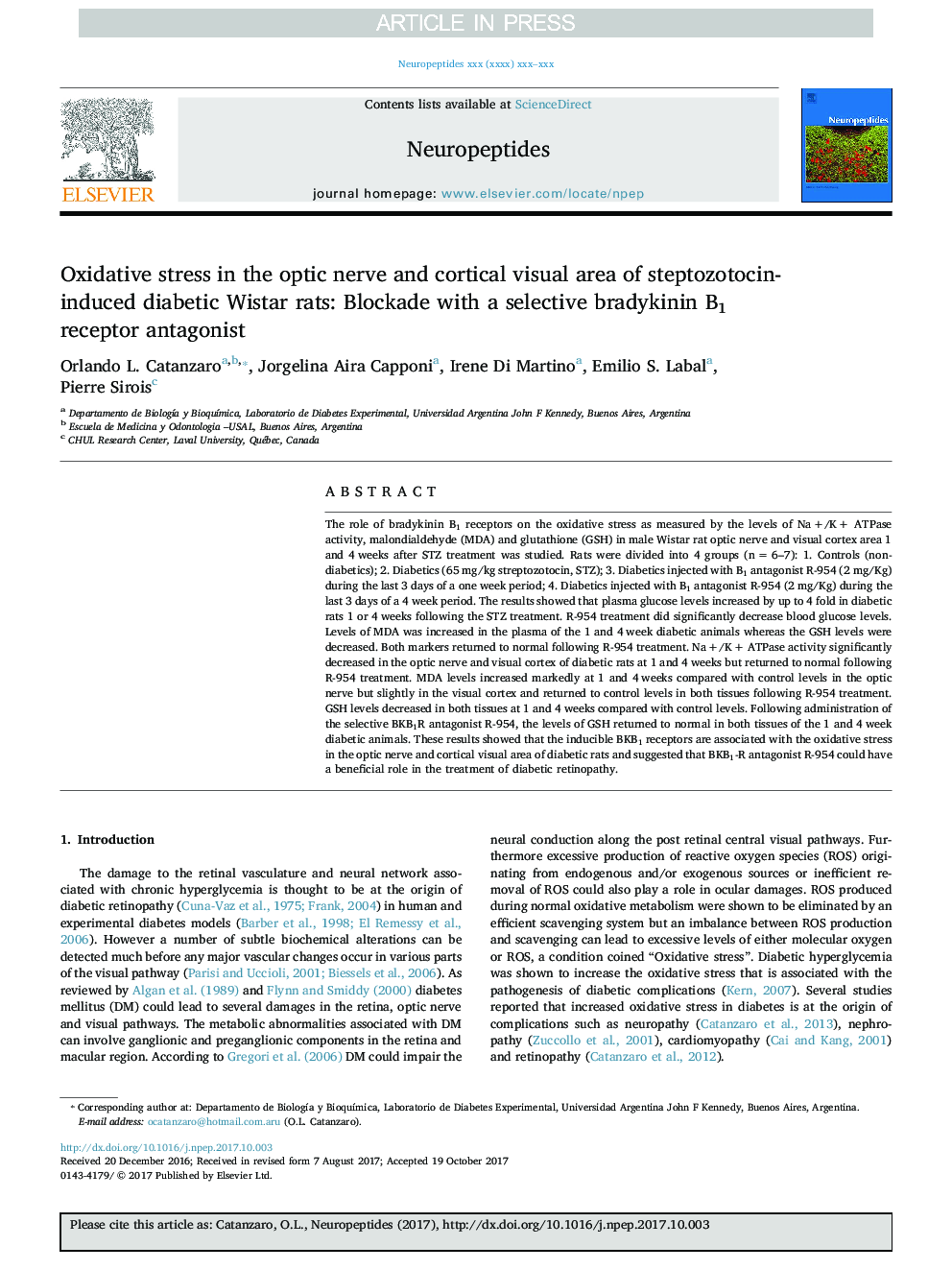| Article ID | Journal | Published Year | Pages | File Type |
|---|---|---|---|---|
| 8633393 | Neuropeptides | 2017 | 6 Pages |
Abstract
The role of bradykinin B1 receptors on the oxidative stress as measured by the levels of Na +/K + ATPase activity, malondialdehyde (MDA) and glutathione (GSH) in male Wistar rat optic nerve and visual cortex area 1 and 4 weeks after STZ treatment was studied. Rats were divided into 4 groups (n = 6-7): 1. Controls (non-diabetics); 2. Diabetics (65 mg/kg streptozotocin, STZ); 3. Diabetics injected with B1 antagonist R-954 (2 mg/Kg) during the last 3 days of a one week period; 4. Diabetics injected with B1 antagonist R-954 (2 mg/Kg) during the last 3 days of a 4 week period. The results showed that plasma glucose levels increased by up to 4 fold in diabetic rats 1 or 4 weeks following the STZ treatment. R-954 treatment did significantly decrease blood glucose levels. Levels of MDA was increased in the plasma of the 1 and 4 week diabetic animals whereas the GSH levels were decreased. Both markers returned to normal following R-954 treatment. Na +/K + ATPase activity significantly decreased in the optic nerve and visual cortex of diabetic rats at 1 and 4 weeks but returned to normal following R-954 treatment. MDA levels increased markedly at 1 and 4 weeks compared with control levels in the optic nerve but slightly in the visual cortex and returned to control levels in both tissues following R-954 treatment. GSH levels decreased in both tissues at 1 and 4 weeks compared with control levels. Following administration of the selective BKB1R antagonist R-954, the levels of GSH returned to normal in both tissues of the 1 and 4 week diabetic animals. These results showed that the inducible BKB1 receptors are associated with the oxidative stress in the optic nerve and cortical visual area of diabetic rats and suggested that BKB1-R antagonist R-954 could have a beneficial role in the treatment of diabetic retinopathy.
Related Topics
Life Sciences
Biochemistry, Genetics and Molecular Biology
Endocrinology
Authors
Orlando L. Catanzaro, Jorgelina Aira Capponi, Irene Di Martino, Emilio S. Labal, Pierre Sirois,
